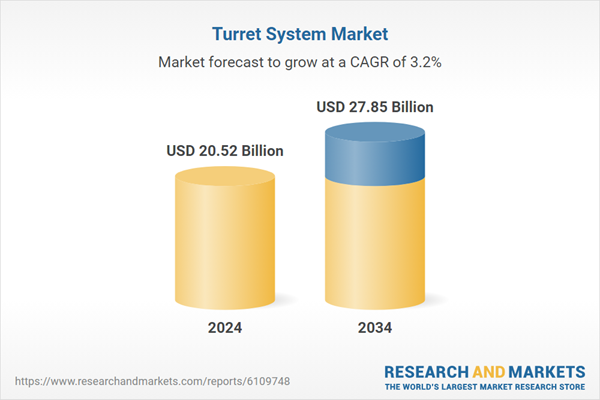Increased investments in defense R&D from government sources are propelling innovation in turret system technologies, particularly in AI, automation, and sensory integration. These advancements are pushing the boundaries of what robotic systems and vehicle-mounted turrets can achieve, resulting in faster contract awards and increased production from private defense firms. Technologies like autonomous navigation and AI-based threat recognition are reshaping the battlefield. They provide real-time situational awareness, intelligent decision-making, and autonomous maneuvering - all critical for minimizing human involvement in dangerous missions and maximizing operational effectiveness across varied terrains and scenarios.
The manned turret system segment generated USD 9.34 billion in 2024. These systems continue to dominate due to their operational adaptability in complex, real-time situations where human judgment remains crucial. Manned turrets offer proven reliability, and instead of replacing them outright, many armed forces are opting to upgrade existing armored fleets with next-gen manned solutions. Missions requiring heightened situational awareness - such as urban combat or counterinsurgency operations - are expected to continue relying heavily on manned systems.
The land-based turret segment generated USD 8.51 billion in 2024. With global defense spending on the rise and the growing need for rapid response to evolving threats, land vehicles are being equipped with advanced turret systems for both manned and unmanned platforms. The rise in deployment of Unmanned Ground Vehicles (UGVs) has amplified the need for turret systems capable of remote operation. Innovations in automation, precision sensors, and AI-driven control systems are making land turret platforms more lethal, accurate, and cost-effective.
Germany Turret System Market generated USD 950 million in 2024. A national push toward Industry 4.0 and digital sovereignty has led to expanded investment in autonomous and semi-autonomous military systems. This includes increased procurement of advanced turret systems for use in both land vehicles and aerial defense platforms. As one of the top arms-exporting countries, Germany continues to boost innovation to remain competitive globally. A growing reliance on AI-powered robotics for tasks like surveillance and border defense underlines the nation’s readiness to adapt to shifting security demands and operational complexity.
Key players shaping the Turret System Market landscape include BAE Systems, Elbit Systems, and General Dynamics Land Systems. Leading companies in the turret system market are investing heavily in R&D to drive innovation in unmanned and AI-integrated turret technologies. Strategic collaborations with defense ministries and government agencies help secure long-term procurement contracts. To strengthen their competitive position, manufacturers are expanding production capabilities, optimizing modular turret architectures, and incorporating cutting-edge materials to reduce weight while maintaining performance. Mergers, acquisitions, and partnerships also allow players to tap into new regional markets and diversify their product portfolios. Furthermore, companies are focusing on upgrading legacy platforms with next-gen capabilities rather than full replacements, helping them maintain relationships with established defense clients and ensure recurring revenue through lifecycle support and system retrofitting.
Comprehensive Market Analysis and Forecast
- Industry trends, key growth drivers, challenges, future opportunities, and regulatory landscape
- Competitive landscape with Porter’s Five Forces and PESTEL analysis
- Market size, segmentation, and regional forecasts
- In-depth company profiles, business strategies, financial insights, and SWOT analysis
This product will be delivered within 2-4 business days.
Table of Contents
Companies Mentioned
- BAE Systems
- Elbit Systems Ltd.
- General Dynamics Corporation
- Leonardo S.p.A.
- Lockheed Martin Corporation
- Moog Inc.
- Northrop Grumman
- RAFAEL Advanced Defense Systems Ltd.
- Rheinmetall AG
- Thales
Table Information
| Report Attribute | Details |
|---|---|
| No. of Pages | 170 |
| Published | June 2025 |
| Forecast Period | 2024 - 2034 |
| Estimated Market Value ( USD | $ 20.52 Billion |
| Forecasted Market Value ( USD | $ 27.85 Billion |
| Compound Annual Growth Rate | 3.2% |
| Regions Covered | Global |
| No. of Companies Mentioned | 10 |









